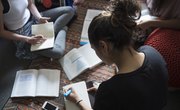Ivy League colleges are some of the most expensive in the world. You may have heard that Ivy League colleges charge as much as $60,000 in tuition every year. Most Ivy League schools’ tuition does indeed average between $45,000 and $60,000 a year. If that exceeds your parents’ income – and it may for many people – then attending an Ivy League school may sound like an impossible dream.
What you may be surprised to learn is that many students at these elite universities will never pay close to this amount. Even more shocking still is the fact that there are many full-ride scholarships to Ivy League colleges and other top schools. Ivy League scholarships come in many shapes and sizes. From the most exhaustive full rides to the smallest book allowances, Ivy League schools offer funding to close the gap between the haves and have-nots and to make even the priciest education possible.
What Is an Ivy League School?
The Ivy League refers to a group of schools in the northeastern United States, primarily in New England and the nearby states. There are eight schools commonly included in the Ivy League. These are Brown University in Providence, Rhode Island; Columbia University in the City of New York; Cornell University in Ithaca, New York; Dartmouth College in Hanover, New Hampshire; Harvard University in Cambridge, Massachusetts; the University of Pennsylvania in Philadelphia, Pennsylvania; Princeton University in Princeton, New Jersey and Yale University in New Haven, Connecticut. This group of schools is often associated with prestige and achievement. They garner applicants from around the world, and many wealthy families have sent their children there for generations.
At one time, only young men were allowed to attend Ivy League schools, and women had to seek their education elsewhere. Most Ivy League schools had a nearby women’s college. These women’s colleges were also prestigious, and they came to be known as the Seven Sisters. The Seven Sisters colleges included Barnard College in New York City; Bryn Mawr College in Bryn Mawr, Pennsylvania; Mount Holyoke College in South Hadley, Massachusetts; Smith College in Northampton, Massachusetts; Wellesley College in Wellesley, Massachusetts; Vassar College in Poughkeepsie, New York and Radcliffe College in Cambridge, Massachusetts. Radcliffe College no longer operates as an independent school, instead having merged with Harvard University in 1977. The other six continue to offer classes, with Vassar College being the only one to go coed, allowing young men to begin attending in 1969.
Ivy League Schools’ Tuition
The average Ivy League school’s tuition is over $50,000 per year, not including room and board. For the 2017-2018 school year, Ivy League colleges reported these numbers for tuition and fees:
- Brown University charged $53,419 in tuition and fees to undergraduates taking standard course loads.
- Columbia University charged $51,640 in tuition and fees to undergraduates taking standard course loads.
- Cornell University charged $52,853 in tuition and fees to undergraduates taking standard course loads.
- Dartmouth College charged $52,950 in tuition and fees to undergraduates taking standard course loads.
- Harvard University charged $48,949 in tuition and fees to undergraduates taking standard course loads.
- Princeton University charged $47,140 in tuition and fees to undergraduates taking standard course loads.
- The University of Pennsylvania charged $53,534 in tuition and fees to undergraduates taking standard course loads.
- Yale University charged $51,400 in tuition and fees to undergraduates taking standard course loads.
With those impossible numbers, it's no wonder that many people from families with average incomes view the Ivy League as nothing but a pipe dream. What a lot of people don’t know is that there’s a secret to paying for an Ivy League education, and it’s possible to attend an Ivy League school for free.
How to Get an Ivy League Scholarship
Ivy League scholarships are awarded to the brightest applicants, with a focus on people who otherwise would not be able to pay tuition. Several schools offer merit-based, full-ride scholarships.
Princeton University offers full-ride scholarships to students from families that make less than $54,000 in annual income. These prestigious scholarships also include room and board. While students whose families make more than that don’t qualify for such an extensive allowance, students from families who make less than $120,000 a year still qualify for free tuition.
Brown University has a similar policy. Students from families bringing in less than $60,000 per year are eligible for full-ride scholarships that include room and board.
Cornell University and Columbia University offer the same policy as Brown. Students from families bringing in less than $60,000 per year are eligible for full-ride scholarships that include room and board.
Harvard University’s maximum income cutoff is slightly higher at $65,000 per year. Successful applicants to Harvard whose parents make less than $65,000 per year will receive scholarships for free tuition plus room and board.
Yale University’s policy is the same as Harvard, with a maximum income cutoff of $65,000 annually.
Dartmouth College, on the other hand, is much more lenient. Students whose families earn less than $100,000 per year will qualify for free tuition.
Just applying to one of these schools doesn’t mean that you’re guaranteed a full ride. You have to be admitted first. Admittance to an Ivy League school is a rigorous task that requires extensive preparation.
How to Apply to an Ivy League School
Before you even consider college applications, you should have started adding activities to your resume. Choose things that show you are a well-rounded candidate, but make sure they’re activities that you enjoy as well. If you want to go to medical school someday, for example, volunteer at your local hospital, go on a medical mission trip and conduct your own research studies with the help of your teachers at school.
When it’s time to apply for colleges, don’t forget to fill out the FAFSA. FAFSA stands for Free Application for Federal Student Aid. This application is crucial because without it, the schools to which you apply won’t know your parents’ income. Even if you technically qualify for financial assistance, forgetting to fill out the FAFSA will make receiving it impossible.
After you fill out the FAFSA, view the application requirements for the individual schools to which you plan to apply. Make a checklist for each to be sure you don’t forget anything.
Remember to spend a significant amount of time crafting the perfect college admissions essay. Grades and resumes are important, but ultimately, they don’t say much about you as a person because so many applicants will have done the same things. Your college admissions essay will help you stand out from the crowd. So, take the time to ensure that it is compelling, and ask plenty of people to read it before you upload it with your application.
Ask your teachers and other authority figures in your life to write recommendations. Don’t forget that these people have busy lives. They will be much more likely to write you a letter of recommendation if you ask well in advance of the deadline.
Lastly, before you hit send, look over all of your application materials one last time. Your attention to detail will catch typos and other errors that might otherwise put you out of the running for admission to your dream school.
Related Articles
References
Writer Bio
Rebecca Renner is a teacher and college professor from Florida. She loves teaching about literature, and she writes about books for Book Riot, Real Simple, Electric Literature and more.











